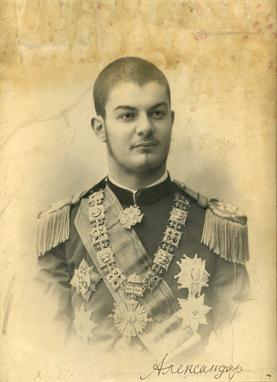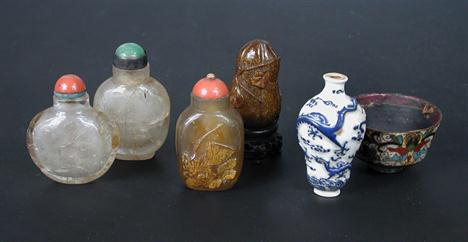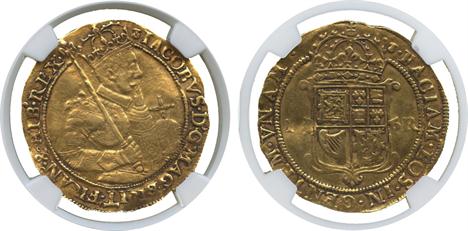Olympic GamesEstade of the canoe sports women, olympia 2nd place and world championship winner Ingrid Hartmann.1.) Diploma, colored, 3rd in the double canoe world championship 1958 in Prag, OU; 2.) document of the national olympic comitee of Germany for the silver olympia winner pin, 1960, OU Karl Ritter von Halt; 3.) document for the silver laurel leaf for exceptionel sports merits at the olympic games 1960, OU Heinrich Lübke; 4.) document roll, imprinted with naming; 5.) two books about the olympic games 1960 in rome, as well as additional further research.After several medals and victories at the Herford canoe-club, Ingrid Hartmann took part at the olympic games in 1960 in Rome. The canoe competition took place at the lake Albano, where the first time buoy-chains separated the candidates, and even today they are used after that: albano-system. Therese Zenz became 2nd in the single canoe competition on 15pm on 29. August, one and a half hours later, she won a silver medal again with Ingrid Hartmann the double-canoe in 1,5916 minutes. Germany was on rank 4 of the medals-winning with in total 42 medals, 19 of these where silver ones. Rare and interesting estade of a successfull olympia winner.Condition: II
We found 596780 price guide item(s) matching your search
There are 596780 lots that match your search criteria. Subscribe now to get instant access to the full price guide service.
Click here to subscribe- List
- Grid
-
596780 item(s)/page
Single PhotosYugoslavia, around 1910, King Aleksandar I. Karadordevic.Cardboard photograph by Eug. Piron, 5. Boulevard St. Germain, 5. Paris, with autographe Aleksandar, 290 x 210 mm. Half-portrait with commander of the russian Newsky-Order, large collar of the Order of Prince Lazar - where he was the first awardee, several grandcross breaststars and sash, in uniform. Large format photo, that has, despite a crack and tear and a partial water damage still of great charisma.Condition: III
Sovjet UnionOrder of the patriotic war, 1. model, 2. type, 2. class.Gold, silver, partially gilded and enamelled, devices twice riveted, hook removed, enamel of the upper arm partially restored, engraved award number 10689, on ribbon broach with marked screw MONETNYI DWOR.DAS S. 139ff, HF4 2.21.2. 46 x 43 mm, 38,9 g m.B.u.Schr.Award from the first half of 1943.Condition: II-III
A late 19th century Chinese famille verte vase and another blue and white, the first with diamond diaper band in green on the waisted neck and with two figure reserves on the rounded cylindrical body, 24.5cm (9.75in) high, the ribbed baluster shape of the second painted on each side with peonies, 13cm (5in) high (2) (W)
A late 18th/early 19th century cloisonne tea bowl and a porcelain snuff bottle, the sides of the first with butterflies and foliage on a white ground band above a silver leaf covered foot, 6cm (2.25in) diameter, the snuff bottle of baluster shaped moulded in relief and overpainted in blue with dragons, 7cm (2.75in) high (2)
SYDNEY OLYMPICS 2000: a collection of memorabilia including a team Australia baseball cap autographed by swimming legend and 5 times gold medal winner Ian Thorpe, a enamel lapel badge, four commemorative coins, rowing, badminton, boxing and a $1 uncirculated coin, a collection of first issue stamps; and a collection of tickets for swimming, football, rowing, boxing etc (a lot)
THE FOLLOWING LOT RELATES TO THE CAREER OF ASTON VILLA AND ENGLAND INTERNATIONAL FRANK MOSS Born Aston, Birmingham in 1895, Moss joined Aston Villa in 1914. He remained with the club until 1929. He captained club and country during his career. A 15CT GOLD 1920 F.A.CUP WINNERS MEDAL the obverse inscribed 1920, the reverse lettered The Football Association, English Cup, F. Moss, 1920, with ring suspension After a break of five years due to the outbreak of WW1. The F.A.Cup final returned this season. In the match played on 24th April 1920 at Stamford Bridge, Aston Villa defeated Huddersfield Town 1-0 thanks to a goal in the first period of extra-time by Bill Kirton. The win for Aston Villa saw them record a then record sixth F.A. triumph
THE FOLLOWING LOT RELATES TO THE CAREER OF FORMER CHELSEA STRIKER IAN HUTCHINSON A 9CT GOLD 1970 F.A.CUP WINNERS MEDAL the reverse inscribed The Football Association, Challenge Cup Winners, I. Hutchinson, the rim inscribed 1969-70, with ring suspension, in original case Chelsea recorded their first-ever F.A.Cup final win this season. In the replayed final played on 29th April 1970 at Old Trafford, Chelsea defeated Leeds United 2-1. The first match, played at Wembley, ended in a 2-2 draw. Ian Hutchinson played a major part in the victory as he scored Chelsea`s equalising goal in their first match in the 86th minute
THE FOLLOWING LOT RELATES TO THE CAREER OF RANGERS AND SCOTLAND INTERNATIONAL TOMMY `TULLY` CRAIG Tommy Craig made his League debut for Rangers against Clyde at Ibrox on 24th September 1923. In this match, he scored two goals and at the end of the season, he had scored a further 12 goals from 37 matches and helped Rangers to the Division 1 League Championship. More-or-less an ever-present for the Ibrox side during their fruitful period in the 1920s, Craig totalled 322 appearances for Rangers scoring 38 goals. He helped the side to 7 League Championship`s between 1923-24 and 1930-31 and appeared in 3 Scottish Cup finals, winning two winners medals. One of a rare breed of footballers who played for both Celtic and Rangers. Tommy started his footballing career with Tullibody F.C. (thus earning him his nickname `Tully` before joining Celtic in 1919. After a brief period with Alloa Athletic in 1922 he joined Rangers and played with them until 1935 A 9CT GOLD AND ENAMEL 1929-30 SCOTTISH CUP WINNERS MEDAL the obverse inscribed Scottish Football Association, the reverse inscribed Scottish Cup, Won By Rangers F.C., T. Craig, 1929-30, with ring suspension Provenance: Christie`s South Kensington, Sporting Memorabilia, 23rd November, 2004, Lot 288 In the above Scottish Cup final replay match played on 16th April 1930 at Hampden Park, Rangers defeated Partick Thistle 2-1, Craig scoring one goal. In the first match played on 12th April 1930 Rangers and Partick Thistle drew the match 0-0
A BLUE LUTON TOWN SHIRT No.5, with button-up collar and embroidered badge, inscribed Luton Town Football Club; an orange official unnumbered Luton Town shirt; and a blue official Luton Town unnumbered shirt, both with Football league flashes (3) The first shirt is this lot is a match worn example and was worn during the 1989-90 season
A BLUE LUTON TOWN SHIRT No.14, with v-neck collar and embroidered badge, inscribed Luton Town Football Club; an official unnumbered green Luton Town goalkeeper shirt; a white unnumbered Luton Town shirt with Football league flashes (3) The first shirt is this lot is a match worn example and was worn during in the early 1980s
A WHITE LUTON TOWN SHORT-SHIRT No.13, with button-up collar and embroidered badge, inscribed Luton Town Football Club, the sleeves with Football League flashes; an official unnumbered white Luton Town shirt; an official blue unnumbered Luton Town shirt with Football league flashes (3) The first shirt is this lot is a match worn example and was worn during in the early 1990-91 season
A SEPIA-TONED STUDIO PORTRAIT OF HEART OF MIDLOTHIAN FOOTBALL CLUB, 1898-99 the image depicting first team, trainer and officials, with East of Scotland Shield, Rosebery Cup and other trophies, with league flags in front of stand, players include Bobby Walker, Isaac Begbie, Albert Buick and Harry Rennie, with team legend, areas of foxing in the margin, the image, 9.1/2 x 14in. (24 x 35.5cm), framed and glazed Literature: Pictorial History of Heart of Midlothian, (1984), David Speed and Others, page 26 Exhibited: Third Eye Centre Scottish Football: a History Exhibition 1983 ref 32 (B)
A SEPIA-TONED STUDIO PORTRAIT OF HEART OF MIDLOTHIAN FOOTBALL CLUB, 1890-91 the image depicting players and officials with Scottish Cup, Hearts first Scottish Cup winning team, taken in front of dressing rooms the image 4.1/2 x 6.1/2in. (11.5 x 16.5cm) framed and glazed Literature: Pictorial History of Heart of Midlothian, (1984), David Speed and Others, page 13 Exhibited: The Third Eye Centre Scottish Football: A History Exhibition 1983 ref 34
HEART OF MIDLOTHIAN FOOTBALL CLUB, MINUTE OF AGREEMENT, 4 AUGUST 1917 the contract between John McCartney, manager of Hearts, and William Gibb of Winchburgh, to be a part-time professional player of the club, at £1 per week under the First World War controlled regulations, written and signed by John McCartney
A Distinguished Service Medal group of five awarded to FX.75964 A.W.H. SAWYER. AIR ART.2. to include Distinguished Service Medal, George VI IND IMP (FX.75964 A.W.H. SAWYER. AIR ART.2.) in it`s original presentation case; Royal Naval Long Service and Good Conduct Medal, George VI (FX.75964 A.W.H. SAWYER.P.O.A.R. H.M.S. MERLIN); 1939-45 Star; Atlantic Star and Africa Star together with all associated paperwork including service record papers. * Alfred William Henry Sawyer first joined the Royal Air Force on 9-6-21 serving for 12 years as a Metal Rigger before being discharged on the 8th June 1933. He then re-enlisted on the 6. Aug 35 as a Metal Rigger. He then was discharged from the Royal Air Force to the Royal Navy on the 20th March 1939. The Long Service and Good Conduct Medal was awarded on the 6th August 1938 and the Distinguished Service Medal awarded on the 19th November 1942.
Alec Fleming (1903-1978), "The Yellow Tram", titled on verso, oil on board, 39 x 49cm.; 15.5 x 19.5in. * This Alderley Edge artist first exhibited in the 1950`s. However, it is only recently that his work has reappeared for sale. There is now considerable interest in his town and country scenes.
Geoffrey Key (1941-), "Two Bathers", signed and dated `99, titled on verso, oil on canvas, 58 x 48cm.; 23 x 19in in original frame hand painted by the artist. * He was a member of the Manchester Academy, gaining first prize there in 1971. Key showed at Salford Art Gallery from 1966; Sheffield University and abroad in 1974; other exhibitions including Harris Museum and Art Gallery, Preston, 1983; Blackheath Gallery from 1989 and Barn Gallery, Cheshire, 1991. Public galleries in Salford, Manchester and Bolton hold his work.
DAVID ROBERTS, RA (1796-1864) THE CHANCEL OF THE CHURCH OF ST. ROMBAULT, TIRLEMONT Signed, oil on panel 40 x 29.5cm. Exhibited: possibly London, The Royal Society of British Artists, 1830, no. 415; London, The Fine Art Society Ltd, 1945 (as a view in Brussels) * This picture dates from one of Roberts`s early foreign excursions. His first had been to northern France in 1824 and by 1830 his principal destinations were Holland and Germany but such interiors are typical of his work from this period: "Gothic gloom, shafted with sunlight" (Katherine Sim, David Roberts R.A. 1796-1864, London, 1984). Roberts also exhibited a view of the Chancel of this church at the British Institution in 1828 (bought by Lord Northwick, one of the artist`s most benign patrons, for £31 10s and listed as Roberts` 26th work). The artist also showed an interior view of the same building at the RBA in 1829 (bought by Lord Farnborough for £52 10s), which may be this picture. ++ Good condition
AFTER JEAN BAPTISTE RIGAUD (Fl. MID-18th CENTURY) VUE PARTICULIERE DE PARIS Engraving with hand colouring by J. F. Leitzelt 25 x 39.5cm.; with three further coloured engravings showing Le Jardin des Marchands; Le Palais de Luxembourg; and View of the Canal in St. James`s Park, London. (4) ++ Some wear and staining in margins; the images generally good; the first two with some foxing
British Coins and Medals. Admiral Richard, Earl Howe (1725-1799), The Battle of the Glorious First of June, 1794, gilt-bronze medalet, unsigned, uniformed bust r., rev. legend in 5 lines, 23.5mm. (BHM.386; MH.421), extremely fine This piece is one of a set of six issued in 1816 commemorating famous naval victories (BHM 925).
G British Coins and Medals. George IV, proof five pounds, 1826, inscribed edge, bare head l., rev. crowned shield of arms over mantle (S.3797; W&R.213), about uncirculated, minor handling and hairlines mainly on obverse, cameo or frosted-gold features with the reverse dramatically beautiful, rare in any state as the proof-only issue of the first five pounds type, popular for a variety of reasons and always in demand
British Coins and Medals. Elizabeth II, coin set, 2007, comprising: silver proof 5 pounds (S.4562); silver proof 2 pounds (2) (S.4583/4584); silver proof pound (S.4598); Britannia 2 pounds (S.4505), all encased in a single NGC plastic holder, the first four graded PF69 ULTRA, the last graded MS68, sold with the original cases for the first three coins; with a bimetallic Silver Jubilee medal, 1977, mint state, in case of issue (6)
Scottish Coins. James II, first coinage (1437-1451), demy, type IVa, mm. crown, lion rampant on lozenge, rev. saltire and lis within ornate tressure, large quatrefoils in angles, annulet stops on both sides, wt. 3.28gms. (S.5217), minor weakness in legends otherwise good very fine, scarce * ex Dix Noonan Webb 59, lot 864
Scottish Coins. James VI, ninth & tenth coinage (1604-1625), unit, mm. thistle, crowned half-length bust r., holding orb and sceptre, rev. crowned shield of arms, Scottish arms in first and fourth quarters, I-R at sides (S.5464), in plastic holder, graded by NGC as XF40, good very fine * ex Sotheby’s 13 February, 1985, lot 270
G Foreign Coins and Medals. Australia, Victoria, Adelaide pound, type two, 1852, date below crown within border, rev. value within border (KM.2; Fr.3), with lovely satiny lustre, tiny flaw or scratch intruding at bottom right obverse, extremely fine to about uncirculated, extremely rare and an exceptionally fine example of the classic first ‘sovereign’ struck in South Australia Gold was discovered in Victoria in 1850, but while gold fever soon struck the entire nation the Gold Rush itself caused enormous social strain. Those who had the fever left their jobs and homes, and their exodus created an unexpected strain in the newly populated territories, lack of employees for many businesses, and a sudden draining of currency from banks all over South Australia. By the following year, 1851, newly rich prospectors found themselves in possession of gold nuggets and dust which were difficult to spend. There was almost no hard cash anywhere, and so no economic stimulation was possible despite all this gold fever and new wealth. Something had to be done quickly. A bullion act was passed by the South Australian Legislative Council early in 1852 and signed into law by Lt-Gov Sir H.E. Young. Technically, the law had no power until approved by the governing authority in England, and this was applied for, but the situation could not tolerate delay. A temporary mint called the Government Assay Office was set up without delay in order to coin what were termed ‘ingots’ bearing designations of weight and fineness as well as the name of the issuing authority. By late August 1852, more than a million pounds’ worth of native gold had been logged in for assay by the Office. Dies for the unofficial but badly needed ‘coins’ were prepared. The now-famous 1852 Adelaide Pound was born. The reverse die almost immediately failed; a replacement was created with a design that varied slightly from the original. But the issue was interrupted soon thereafter by word received from England that the Assay Office was not a legal entity – the Crown refused the request to coin money in Australia. The bullion act had in fact been intended as only a stop-gap solution to the shortage of money, but the legislative council had not foreseen that its actions would be quite so short lived. As a result, the official mintage record stated that only 24,768 gold pounds were created before the experiment ended. And yet the troubles facing the first gold coins made in Australia were far from over. The coins were of high purity (22 carats, or nearly 92% pure gold), as it was intended that they should readily pass at the same value as the well-known gold sovereign. But, again, the best of intentions were curtailed: the coins quickly became subjected to speculation by profiteers, and a great many were bought in Victoria at face value and shipped to England to be melted, for a profit of nearly two shillings a coin. Nearly the entire mintage was soon melted, and it is believed that only approximately 250 pieces in all have survived, most bearing the design of the revised reverse die. These are what remain of the first Australian coins made of native gold ore.
G Foreign Coins and Medals. Australia, Victoria, half sovereign, 1856, Sydney mint, laur. head l., rev. AUSTRALIA crowned within wreath (KM.1; Fr.9a), practically mint state, as struck, only minimal abrasions, a sharp even strike showing a most pleasing portrait with only slight weakness on a couple of leaves and top of bow of reverse, an opportunity to acquire an excellent example of this 2-year first style of issue featuring the distinctive Sydney reverse, rare and especially so in this state of preservation A superb piece, by far the finest we have handled.
-
596780 item(s)/page













































